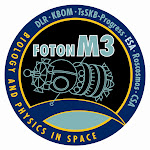What is the aim of TARDIS?
Why should we send dry aquatic invertebrates into space, an environment that certainly is not normal for these animals? There are many answers to this question. One would be: to see if these animals, as the first ever, are able to cope with the extremely dry conditions of deep vacuum and the harmful solar and galactic radiation up there. In the past, several biologists have suggested that tardigrades may be one of the few animals that have a chance to come back alive after a trip in real space. Finally we will be able to find out if this is true.
At a more mechanistic biological level, exposure of organisms to space conditions will reveal how living cells react to the potentially very stressful impact of space parameters. And organisms that can handle the damaging space parameters will be important sources of knowledge for how to generate the space ecosystems that will be necessary for the more permanent human establishments in space that is envisaged today.
The TARDIS experiment consists of two sets of samples: one set exposed to both space vacuum and solar radiation, and another set exposed to space vacuum only. All tardigrade specimens included in the study are in a dry, anhydrobiotic state. Species included are: Richtersius coronifer, Milnesium tardigradum, Echiniscus testudo, Ramazzottius oberhaeuseri. These are all known to be very tolerant to desiccation.
Once on the ground again, these samples will be analysed for survival and reproductive potential, and for damage on DNA.

